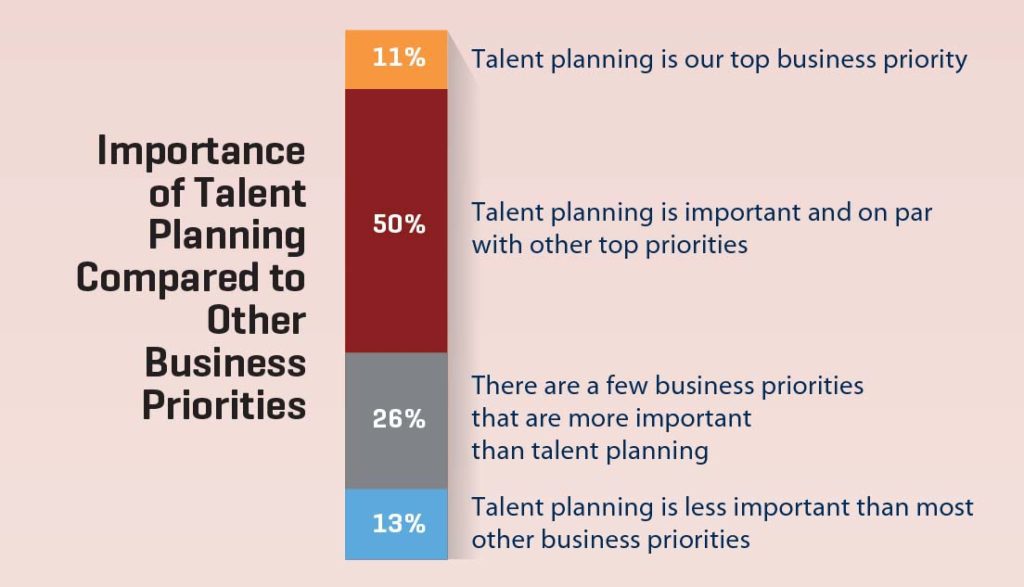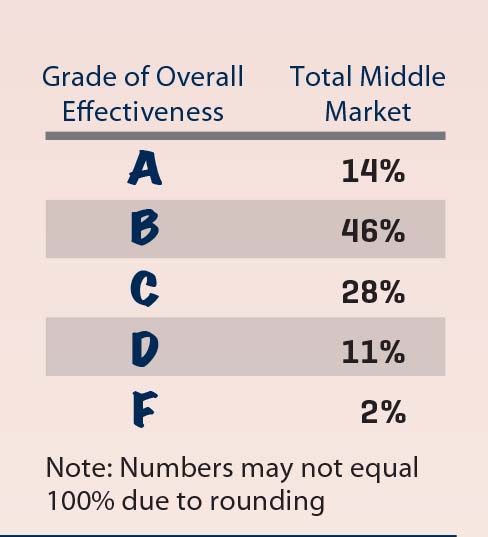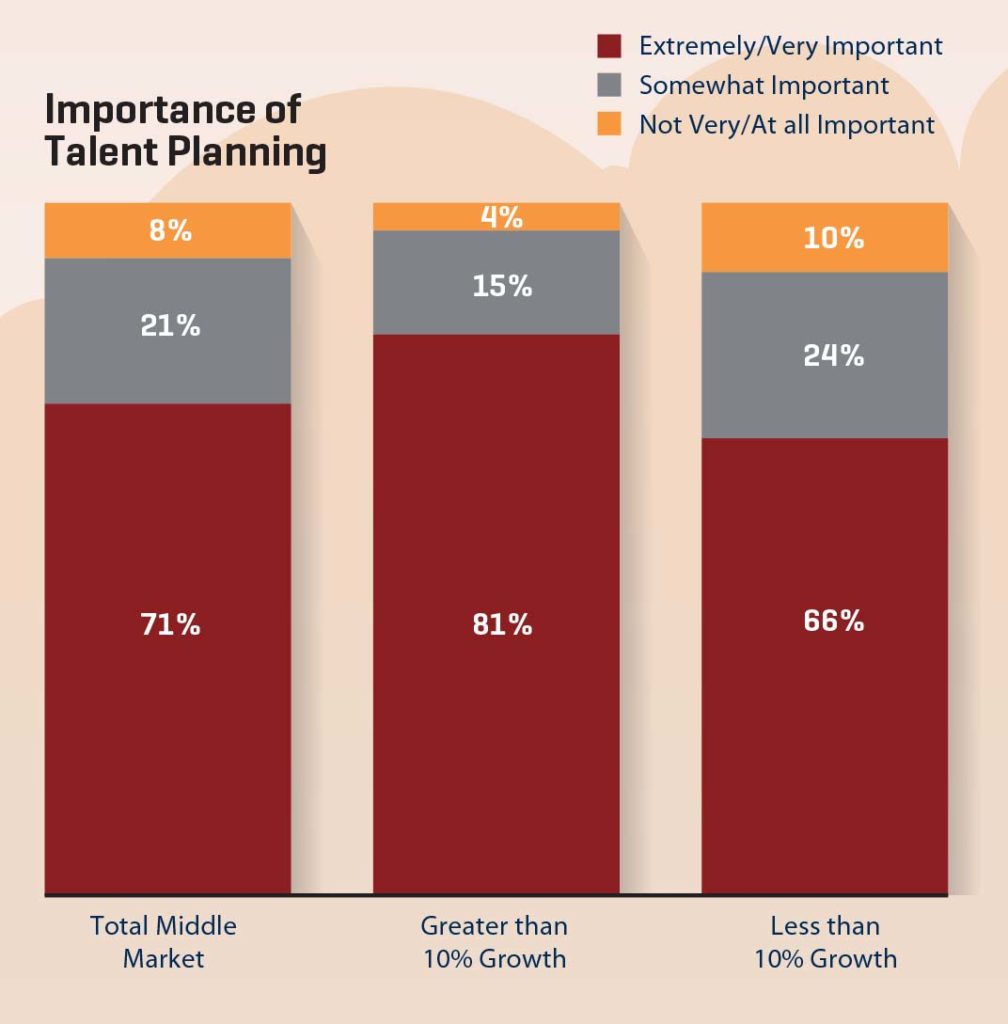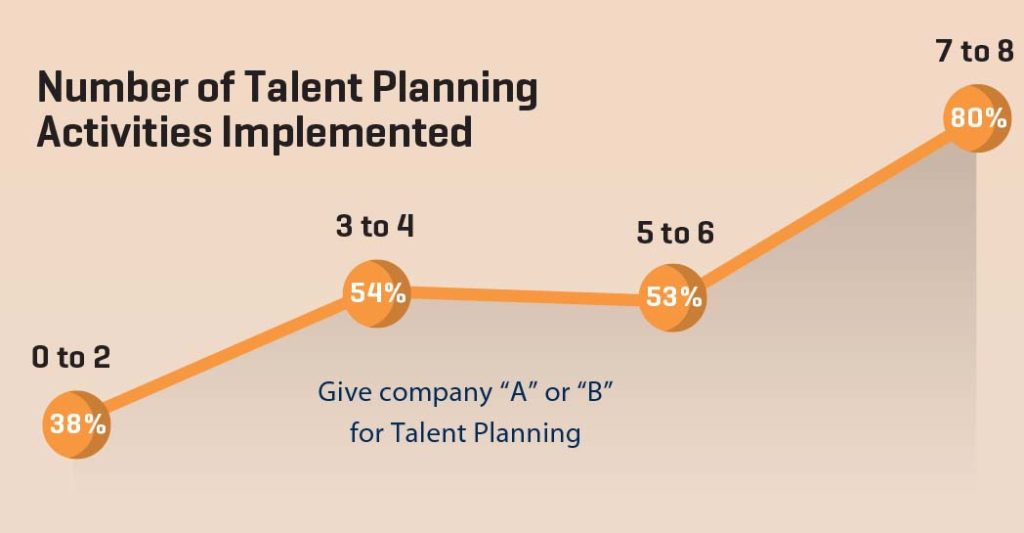
Finding and keeping the right talent is not getting any easier, and that makes a comprehensive approach to talent planning critical. However, a recent study from the National Center for the Middle Market (NCMM) found that less than half of medium-sized businesses (annual revenues between $10 million and $1 billion) are implementing key talent planning processes such as succession planning, development and performance management.
There is “clear room for improvement,” says Thomas A. Stewart, executive director of the NCMM, which is based at the Fisher College of Business at The Ohio State University. The study “underscores something that has been said again and again, which is that talent planning is a strategic process in which top management should be deeply engaged—starting with the CEO.”
Talent Planning Is Seen as a Priority…
 About 6 out of 10 middle-market executives said that talent planning is one of their main business priorities, including 11% who said it was their top priority. The talent-planning activities that they cited as most important included identifying key positions in the business, regularly assessing employee performance and potential, identifying best performers and retaining critical employees.
About 6 out of 10 middle-market executives said that talent planning is one of their main business priorities, including 11% who said it was their top priority. The talent-planning activities that they cited as most important included identifying key positions in the business, regularly assessing employee performance and potential, identifying best performers and retaining critical employees.
…But Companies Often Struggle to Plan Effectively
 When asked to rate the effectiveness of their companies’ talent planning efforts, only a relative handful of respondents gave themselves an “A” grade. Forty-one percent graded themselves a “C” or lower. Less than one-third said that their organizations were fully committed to talent planning.
When asked to rate the effectiveness of their companies’ talent planning efforts, only a relative handful of respondents gave themselves an “A” grade. Forty-one percent graded themselves a “C” or lower. Less than one-third said that their organizations were fully committed to talent planning.
Talent Planning Is Good Business
 Executives from fast-growing companies (those with annual revenue growth of 10% or more) were more likely than those from slower-growing companies to think talent planning is extremely or very important. They were also more likely to report that their companies excel at talent planning.
Executives from fast-growing companies (those with annual revenue growth of 10% or more) were more likely than those from slower-growing companies to think talent planning is extremely or very important. They were also more likely to report that their companies excel at talent planning.
Missing: Systematic, Formal Planning
 The researchers found that fast-growing companies are more likely to have a well defined talent-planning process. A majority of middle-market firms do indeed have a somewhat clear process, but only about one in five have a highly formal process with defined rules and guidelines. Among companies that excel at talent planning, about one out of four have formal talent-planning processes.
The researchers found that fast-growing companies are more likely to have a well defined talent-planning process. A majority of middle-market firms do indeed have a somewhat clear process, but only about one in five have a highly formal process with defined rules and guidelines. Among companies that excel at talent planning, about one out of four have formal talent-planning processes.
Implementation Lags in Key Areas
 Middle-market companies recognize the value of solid talent planning, but they do not always follow through with action. Even with the activities that executives ranked as important, actual implementation is relatively low, with about 4 out of 10 companies—or fewer—having those activities in place.
Middle-market companies recognize the value of solid talent planning, but they do not always follow through with action. Even with the activities that executives ranked as important, actual implementation is relatively low, with about 4 out of 10 companies—or fewer—having those activities in place.
The More, the Merrier
 Researchers looked at companies’ implementation of 16 talent-planning activities, such as identifying retention risks, identifying skill gaps and retaining critical employees. They found a clear correlation between companies that use more types of activities and those
Researchers looked at companies’ implementation of 16 talent-planning activities, such as identifying retention risks, identifying skill gaps and retaining critical employees. They found a clear correlation between companies that use more types of activities and those
that report high levels of talent-planning effectiveness.
Guidelines for Taking Action
The researchers developed a framework to help executives develop talent-planning programs, known as ABLE (Align, Build, Lead, Engage). “Senior executives often don’t
have a way to approach the problem,” says Stewart. The framework, he says, can provide just that, and companies can “use it as the basis for a day or half-day piece of talent-planning work by the executive team.”
Align talent planning with corporate business strategy. More than two-thirds of respondents said that aligning talent planning and business strategy is important, but just 29% of firms do so. Meanwhile, 40% of top-performing companies do take steps to align the two.
Build processes to enable successful talent planning. Stewart points to “the need to put in the right amount of process.” The right amount changes as companies grow. “You don’t want to overburden things with bureaucracy,” he says. “But you also don’t want to under-support things and continue being loosey-goosey when you’ve grown too big for that.”
Lead by example. Top leadership needs to be involved in talent planning—it should not simply be delegated to HR. Senior leaders at higher-performing middle-market companies are more likely to be a part of talent-planning efforts, compared to lower-performing firms.
Engage the organization. Get employees involved and ensure that they recognize the value of talent planning. Nearly three-quarters of firms where employees are engaged report that they handle talent issues well or extremely well, as opposed to about one-third of firms where employees are merely “compliant” with talent-planning processes.




0

1:00 - 5:00 pm
Over 70% of Executives Surveyed Agree: Many Strategic Planning Efforts Lack Systematic Approach Tips for Enhancing Your Strategic Planning Process
Executives expressed frustration with their current strategic planning process. Issues include:
Steve Rutan and Denise Harrison have put together an afternoon workshop that will provide the tools you need to address these concerns. They have worked with hundreds of executives to develop a systematic approach that will enable your team to make better decisions during strategic planning. Steve and Denise will walk you through exercises for prioritizing your lists and steps that will reset and reinvigorate your process. This will be a hands-on workshop that will enable you to think about your business as you use the tools that are being presented. If you are ready for a Strategic Planning tune-up, select this workshop in your registration form. The additional fee of $695 will be added to your total.

2:00 - 5:00 pm
Female leaders face the same issues all leaders do, but they often face additional challenges too. In this peer session, we will facilitate a discussion of best practices and how to overcome common barriers to help women leaders be more effective within and outside their organizations.
Limited space available.

10:30 - 5:00 pm
General’s Retreat at Hermitage Golf Course
Sponsored by UBS
General’s Retreat, built in 1986 with architect Gary Roger Baird, has been voted the “Best Golf Course in Nashville” and is a “must play” when visiting the Nashville, Tennessee area. With the beautiful setting along the Cumberland River, golfers of all capabilities will thoroughly enjoy the golf, scenery and hospitality.
The golf outing fee includes transportation to and from the hotel, greens/cart fees, use of practice facilities, and boxed lunch. The bus will leave the hotel at 10:30 am for a noon shotgun start and return to the hotel after the cocktail reception following the completion of the round.